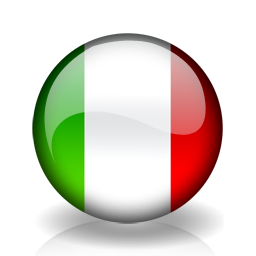MASTER'S DEGREE
METHODOLOGY OF THE ARCHAEOLOGICAL RESEARCH (SSD L-ANT/10)
(60 hours, 9 ECTS, second semester) - A.Y. 2020/2021
Prof.ssa Gloria Olcese (gloria.olcese@unimi.it)
Università degli Studi di Milano
Degree Program:
Archaeology (Classe LM-2) - Enrolled from 2019/2020
Learning objectives: to understand, as much as possible with the practical components, the activities of archaeological research in the field and in the laboratory, with particular attention to modern research methods related to excavation, archaeological survey and the study of ancient production through analysis of finds. The goal is to offer investigative and interpretive tools that are applicable in diverse contexts of time and location.
The study of some shipwreck cargoes at some Museums in Liguria and at the Instituto Internazionale degli Studi Liguri (if the public health situation allows) will introduce students to underwater archaeology.
Expected learning outcomes: to allow the student to encounter the study of archaeological contexts and classify their finds using archaeological and archaeometric methods.
To draw attention to the scientific aspects of archaeological research and to acclimate the student to the use of tools for documenting archaeological data, and to the review and analysis of these data.
To compose a final thesis on topics covered in this course, which will facilitate the process of analysing and displaying scientific research data.
Program: this course, which is divided into three parts, presents some aspects of archaeological field research – both on land and underwater – emphasizing modern, scientific methodologies.
In particular, it focuses on the archaeology of production and trade using one of the most widely used indicators in archaeology, that is, ceramics, in order to reconstruct the processes of production and trade networks in antiquity.
- Part 1 (3 CFU – 20 hours)
Archaeological and archaeometric research methods
The first part of this course highlights the importance of methods and interdisciplinary studies in archaeology. Some of the more recent directions in archaeological research that make use of scientific methods in the laboratory and in the field will also be presented, including through study examples.
- Part 2 (3 CFU – 20 hours)
Archaeology of production and trade
One area of archaeological research that has been important in recent years is the study of ancient production areas and the reconstruction of trade and Mediterranean networks, including through the study of shipwreck cargoes in the Western Mediterranean. This unit illustrates the objects and some outcomes of these studies that are on-going as part of the Immensa Aequora project. Some lectures are dedicated to underwater archaeology.
- Part 3 (3 CFU – 20 hours)
Ceramics in archaeology and archaeometry
Ceramics are an important indicator for archaeologists, not only for dating, but also for reconstructing production and trade in Antiquity. This unit includes a review of “traditional” methods for studying ancient ceramics and the principal laboratory methods for the reconstruction of ceramic technologies, determination of origin of containers, and the reconstruction of ancient trade. Attention will also be paid to analysis of residues, which makes it possible to establish the nature of the contents and to reconstruct ancient diets.
- Practical component
If the public health situation allows for it, practical lessons are planned on ancient finds, particularly ceramics (description and classification). A second edition of this three-day seminar is also planned at the Instituto Internazionale degli Studi Liguri (Bordighera and Albenga), in collaboration with the relevant superintendency. This seminar relates to underwater archaeology, including the classification and study of part of the cargoes from some Roman shipwrecks.
- Excavation Laboratory
An integral part of this course is the excavation of a Roman villa at Dragoncello/Acilia, in the area of Ostia Antica, in collaboration with the Archaeological Superintendency of Rome.
Teaching resources:
In addition to the texts listed below, some assignments will be added during the first lectures.
Non-attending students are asked to contact the instructor to make arrangements for completing the program.
Part 1 (Methodology of archaeological and archaeometric research)
- D. Manacorda, R. Francovich (a cura di), Dizionario di Archeologia, Roma-Bari 2000 - le seguenti voci: Archeometria; Campionatura; Commercio (Archeologia del); Contesto; Cronologia; Cultura Materiale; Datazione; Determinazione d'origine; Diagnostica archeologica; Etnoarcheologia; Geoarcheologia; New Archaeology; Produzione (Archeologia della); Post-processuale (Archeologia); Ricognizione archeologica; Scavo archeologico; Scavo, pratica e documentazione; Seriazione; Sperimentale (archeologia); Subacquea (archeologia); Tecnologie produttive; Urbana (archeologia).
Students who have not sat for their exams in Methodology at the triennial must add the following texts:
1) C. Renfrew, P. Bahn, Archeologia: Teorie, Metodi, Pratica, Zanichelli Editori, Bologna 2006 (chapters: 1, 2, 3, 4, 8 e 9).
+
- E. C. Harris, Principi di stratigrafia archeologica, Nis 1995 (parts 1, 2, 3, 4, 5, 6, 9, 10 and Appendices).
Part 2 (Archaeology of production and trade – underwater archaeology)
1) - R. Petriaggi, B. Davidde, Archeologia sott'acqua. Teoria e pratica, Pisa 2007 (chapters 1, 2, 6 e 7).
or
- C. Beltrame, Archeologia marittima del Mediterraneo. Navi, merci e porti dell'antichità all'età moderna, Roma 2012 (chapters 1, 2 e 3).
+
2) The reading planned for the practical component, which will be given during the first lectures on the basis of the component’s feasibility.
Part 3 (Ceramics in archaeology and archaeometry)
1) N. Cuomo di Caprio, Ceramica in archeologia 2, Roma 2006 (chapter 1 - Dall'argilla al reperto e dal reperto all'argilla, pp. 29-39).
2) G. Olcese, Il contributo delle analisi di laboratorio allo studio e alla classificazione della ceramica in archeologia, in: Acte du 8° Congrès SIMCER (Simposio Internazionale della Ceramica) "Archeometria della ceramica: problemi di metodo", (Rimini, 10-12 novembre 1992), Bologna 1993, pp. 35-53.
Assessment methods and criteria: oral exam; preparation of a paper regarding the seminary in Liguria (Istituto Internazionale di Studi Liguri) on underwater archaeology (if possible, in consideration of the Covid emergency).
Exams: to be decided.
Classes: to be decided. Frequency is highly suggested.
Emergency remote teaching: if the health emergency continues, the lessons of will take place online.
Students will find the information about lessons, program and bibliography on this site and on the Ariel teaching site.
If it is not possible to take the exam in presence, the exam will be conducted online.




